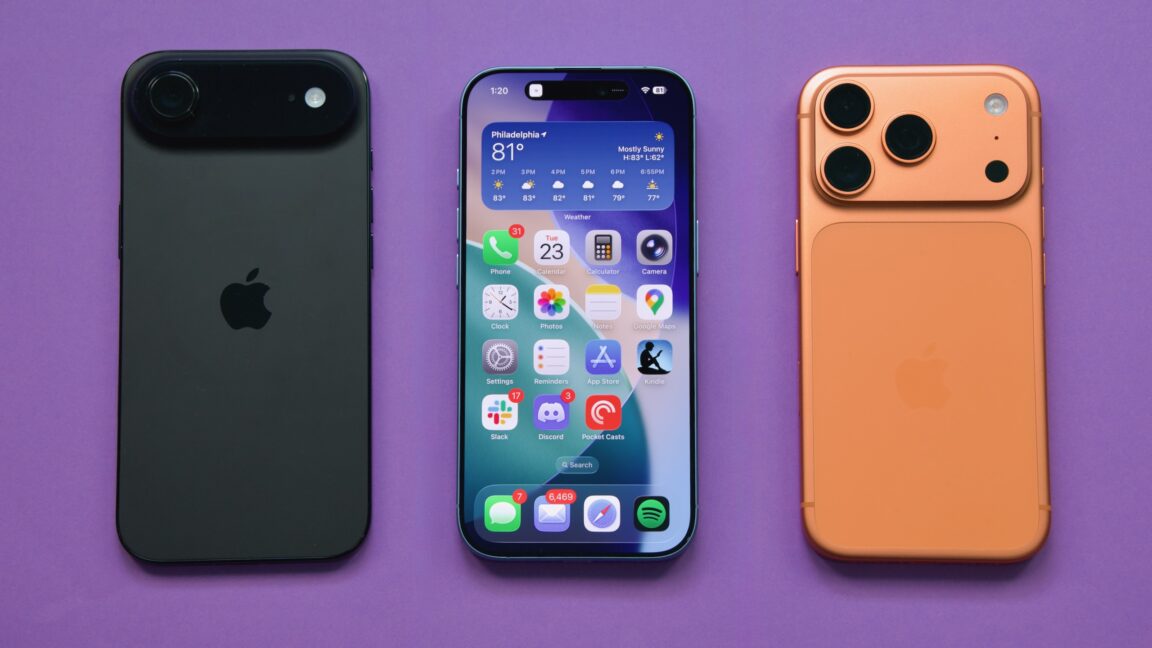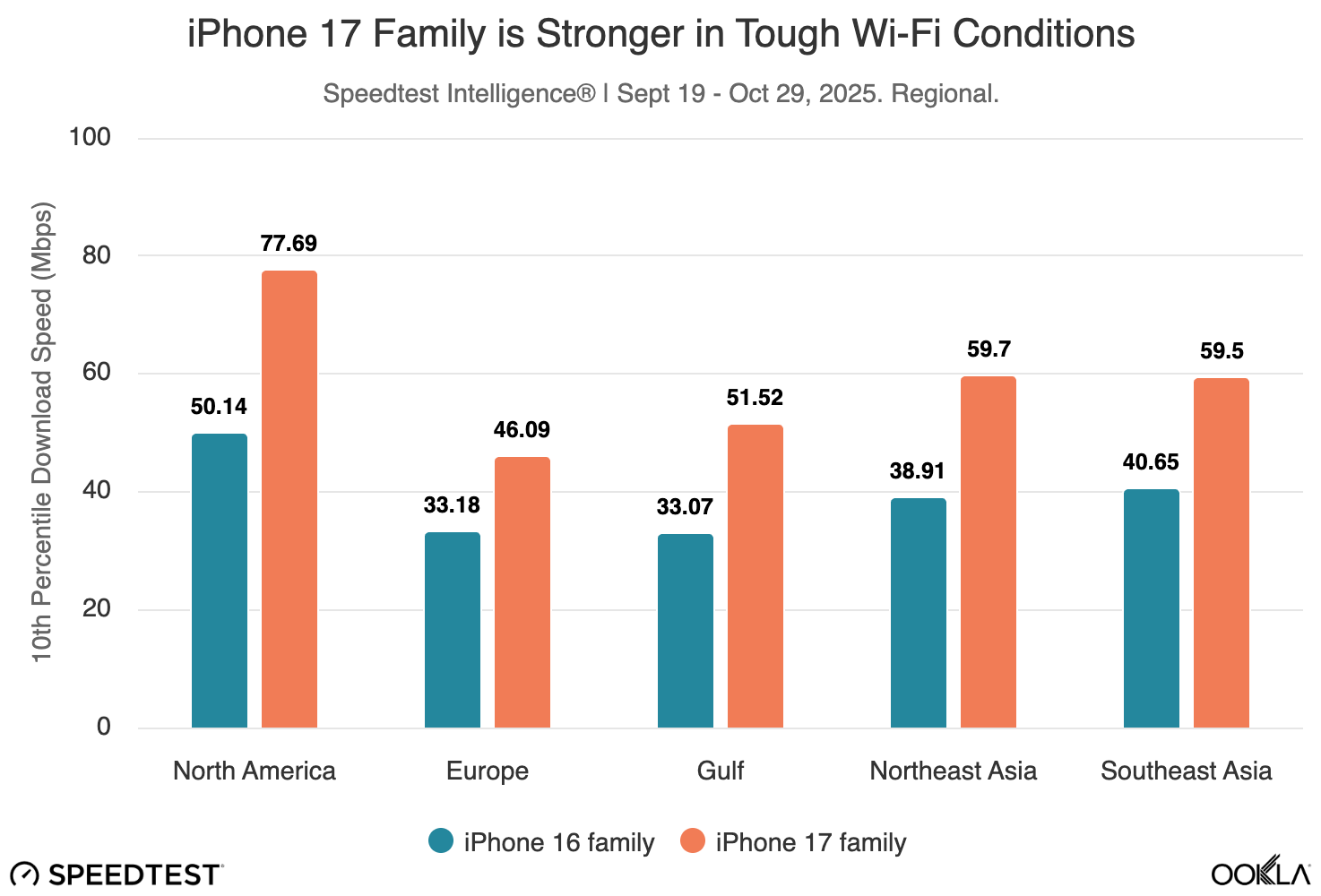
Credit: Andrew Cunningham
This year’s newest iPhones included one momentous change that marked a new phase in the evolution of Apple Silicon: the Apple N1, Apple’s first in-house chip made to handle local wireless connections. The N1 supports Wi-Fi 7, Bluetooth 6, and the Thread smart home communication protocol, and it replaces the third-party wireless chips (mostly made by Broadcom) that Apple used in older iPhones.
Apple claimed that the N1 would enable more reliable connectivity for local communication features like AirPlay and AirDrop but didn’t say anything about how users could expect it to perform. But Ookla, the folks behind the SpeedTest app and website, have analyzed about five weeks’ worth of users’ testing data to get an idea of how the iPhone 17 lineup stacks up to the iPhone 16, as well as Android phones with Wi-Fi chips from Qualcomm, MediaTek, and others.
While the N1 isn’t at the top of the charts, Ookla says Apple’s Wi-Fi chip “delivered higher download and upload speeds on Wi-Fi compared to the iPhone 16 across every studied percentile and virtually every region.” The median download speed for the iPhone 17 series was 329.56Mbps, compared to 236.46Mbps for the iPhone 16; the upload speed also jumped from 73.68Mbps to 103.26Mbps.
Ookla noted that the N1’s best performance seemed to improve scores most of all in the bottom 10th percentile of performance tests, “implying Apple’s custom silicon lifts the floor more than the ceiling.” The iPhone 17 also didn’t top Ookla’s global performance charts—Ookla found that the Pixel 10 Pro series slightly edges out the iPhone 17 in download speed, while a Xiaomi 15T Pro with MediaTek Wi-Fi silicon featured better upload speeds.

Ookla’s testing data suggests Apple’s N1 Wi-Fi chip is more reliable when Wi-Fi connections are spottier.
Credit: Ookla
Android phones also sometimes benefit from faster adoption of new technologies and support for 6 GHz Wi-Fi 7 with a 320 MHz channel width. While the N1’s lack of support for these features “does not materially affect performance in real world use for most people,” Android phones like the Pixel 10 series and Samsung’s Galaxy S25 can outrun the iPhone 17 in areas where those technologies are being used.
Note that Ookla’s approach can’t control for things like people’s distance from their Wi-Fi router, what kind of router they’re using, and the upload and download speeds set by their ISP. To control for this and minimize outliers, Ookla only publishes median numbers for the phones it’s tracking; it also lumps together phones from the same product families (the iPhone 17 results also include the 17 Pro and the iPhone Air, for example).
Ookla published similar data about the performance of Apple’s C1 cellular modem, also a first-generation chip design. As with the N1, Ookla’s main finding was that the C1 didn’t support the cutting-edge technologies it would need to top the performance charts, but that its speeds were mostly in the same ballpark as the Qualcomm modems in the iPhone 16 and that the C1 actually fared best in countries with less-robust cellular networks.
Since announcing the N1 in the iPhone 17 series in September, Apple has also launched a new Apple M5 iPad Pro with the N1 inside, though the chip was not included in the M5 MacBook Pro that Apple announced at the same time. The N1’s Thread support also makes it a good fit for Apple’s smart home and smart home-adjacent devices like the HomePod speaker or the Apple TV streaming box. The next time we see hardware refreshes for those devices—and updates are supposedly coming sooner rather than later—we expect to see the N1 included.

-
 C114 Communication Network
C114 Communication Network -
 Communication Home
Communication Home


